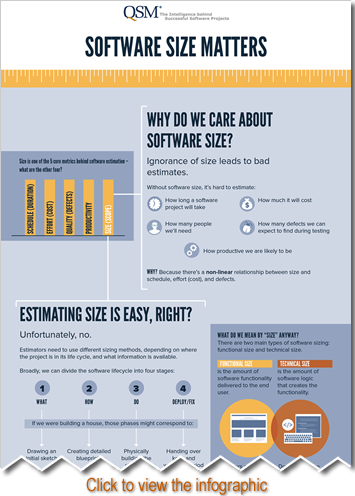Trend Based Solutions Generate Reasonable Estimates Fast
Beginning with the release of SLIM-Suite v8.1, two new SLIM-Estimate solution methods were added to let you see what a “typical” project would look like: that is, the resources it would require, based upon historical projects from either the QSM database or your own. The two methods are:
- Solve from Trends Wizard
- Trend Based Solution
SLIM-Estimate provides several different ways to solve the software production equation and produce an estimate. The solution method you select depends upon the information you have available. The traditional methods, known as Quick Estimate Wizard and Detailed Method, take inputs of Size and Productivity (PI), and calculate Effort and Time. The Solve for Size Wizard, perfect for time-boxed estimates, takes inputs of Time, Effort, and PI, and determines the amount of functionality that combination of resources can produce.
The trend solutions require only one input – Size. Using the specified Primary Trend Group, Time and Effort are read from the average trend line and productivity (PI) is calculated. These methods extend the capabilities of producing a defensible project estimates very early in the life cycle. You can determine the feasibility of project goals, assess risk, and manage stakeholder expectations even if all you can estimate is a relative application size, expressed as a “T-shirt” or bin size, as shown in the figure below.
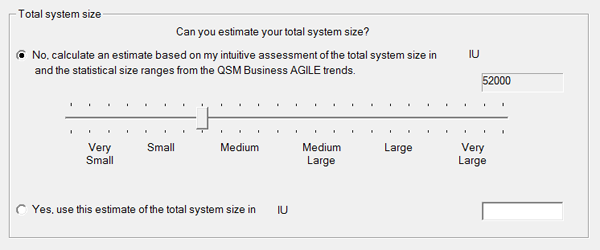

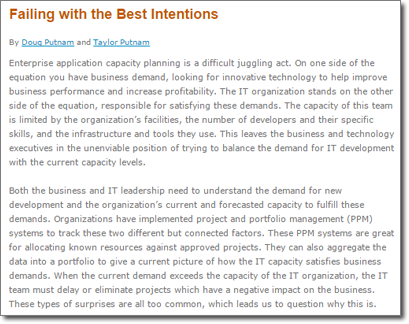
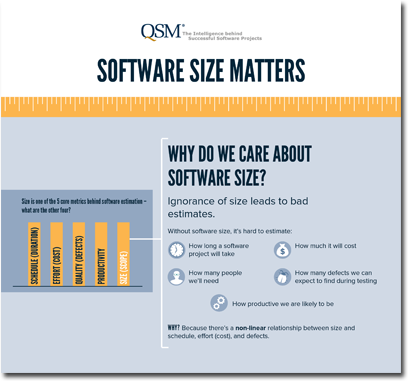
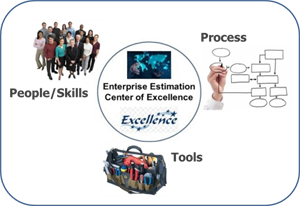 People – Finding people with the right characteristics and developing their skills;
People – Finding people with the right characteristics and developing their skills; There is an old adage that if your only tool is a hammer, everything looks like a nail. We use the lessons learned and experience we have gained to address current issues. But if the problem (or software project) we face today is fundamentally different from those we’ve dealt with previously, past experience isn’t the proper framework. In effect, we will be using a hammer when a saw or a chisel might be the tools we need.
There is an old adage that if your only tool is a hammer, everything looks like a nail. We use the lessons learned and experience we have gained to address current issues. But if the problem (or software project) we face today is fundamentally different from those we’ve dealt with previously, past experience isn’t the proper framework. In effect, we will be using a hammer when a saw or a chisel might be the tools we need.
